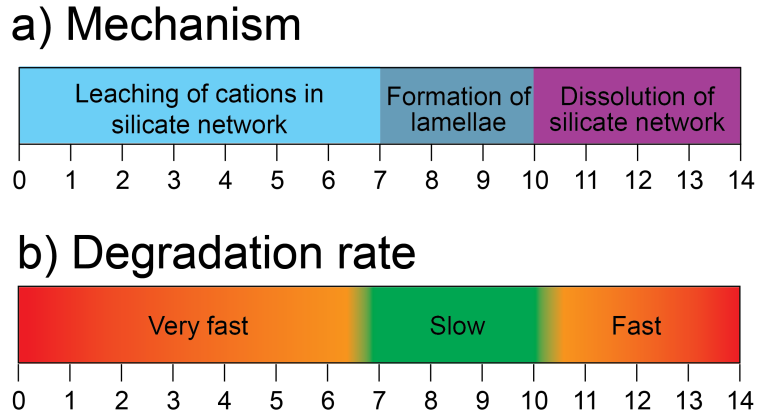The Impact of Heritage Object Surroundings on Problem Occurrence
Fluctuations in relative humidity are known to cause wood and paper in heritage objects to contract and expand, leading to the formation of micro-cracks. To counteract these effects, museums and churches often employ acclimatization systems to keep the preservation conditions (more) stable. However, when such technology fails, it abruptly disrupts environmental conditions, particularly impacting hygroscopic materials. Moreover, repairs to these systems often involve sudden restarts, introducing additional shocks to preservation conditions. In an attempt to reduce energy consumption, decision-makers might adjust the system's average temperature, indirectly impacting the degradation rates of specific objects in the collection. Additionally, traffic exhaust gases infiltrating the building can lead to chemical reactions with metal surfaces or pigments, causing undesirable discolorations. Meanwhile, insects entering during warmer seasons pose a threat to textiles and paper. Visitors inadvertently contribute to CO2 and moisture levels and may unintentionally damage objects by handling or displacing them. Rainfall typically reduces visitor numbers, yet wet clothes can elevate indoor moisture content. Cleaning the rooms with water and detergents can elevate humidity and introduce substances in the air that trigger chemical reactions. The risks of theft, vandalism, and fire are additional sources of potential damage.

The heritage community commonly agrees that these interconnected hazards are summarized by the "10 agents of deterioration": Nine physical risks (physical forces, fire, water, criminal activities, pests, pollutants, light, incorrect temperature, incorrect humidity) and the tenth, custodial neglect.

Heritage collections encompass a diverse range of objects and materials, each responding differently to the environmental conditions. Introducing changes in the network of hazards can lead to less aggressive preservation conditions, thereby extending the lifespan of heritage objects and minimizing adverse effects. To realize that goal, the behavior of the network of interconnected hazards must be monitored. This means that it is not enough to monitor the parameters that effectively lead to damage, but that the context must also be monitored to understand what is happening in the surroundings of the heritage objects.
Damage caused by the surroundings
As humans, we hold a strong attachment to heritage objects, desiring to pass them on to our children unharmed, allowing them to relish these items as we have. Regrettably, several factors contribute to damage, some beyond our control. Chemical degradation triggered by environmental parameters is one of them. To understand the relationships between cause and effect, we need to the degradation mechanisms of heritage materials. One of the degradation mechanisms I studied in detail, is the one of historical glass. What fascinated me, is how a perfectly homogeneous and transparent glass can transform into an opaque and extremely heterogeneous material.

Thorough research has revealed significant distinctions in how a solution interacts with glass under various conditions, such as acid (where protons replace the cations in the silicate network), mild alkaline (resulting in lamellae formation, see Fig. 3a), and strong alkaline conditions (leading to the dissolution of the silicate network and the formation of pits). Unfortunately, these processes occur at a microscopic level and progress slowly, rendering them imperceptible to the naked eye. Moreover, it is challenging to observe the shift in degradation mechanisms when the pH of the solution changes. For a substantial period, the academic community did not acknowledge the degradation mechanism in mild alkaline conditions as a separate mechanism. The degradation mechanisms under acidic, mild alkaline, and strong alkaline conditions are governed by the same underlying properties. This implies that the hazard ‘aqueous solution’ is determined by a common set of properties, but the way these properties influence the degradation mechanisms may differ under different conditions.

Importance of cause-effect relationships
The network of interconnected hazards collectively influences a diverse collection of precious heritage objects made from various materials. The importance of these cause-effect relationships is described by the concept of 'risk'. Risk is commonly evaluated by quantifying the probability of an object encountering harm (i.e., the cause) multiplied by the impact of that incident (i.e., the effect). The goal of risk assessment is to convert the data gathered from environmental monitoring campaigns that give an insight into the behavior of the network of hazards into a level of risk.

Conducting a study of the cause-effect relationships in reverse is an alternate approach. Visual inspection aids in estimating the amassed damage. This insight, along with estimations of an object's lifespan, allows for an evaluation of potential risks related to accelerated degradation. To further comprehend the degradation susceptibility of heritage materials, in-depth insights into their chemical composition and microstructure are garnered through microscopic analysis. The inherent heterogeneity in many heritage materials necessitates this approach. For example, structures such as pigment granules adhered to surfaces with adhesives or the intricate layering within painted surfaces vividly showcase this heterogeneous nature.

Information about the cause-effect relationships enables the identification of the most significant threats in the surroundings of a collection, prompting measures to mitigate environmental aggressiveness. This methodology is known as preventive conservation.
References
Carro, G. et al. (2023). Indoor air quality for heritage objects and human health: just a different interpretation of the same measurements? Air Quality, Atmosphere and Health. DOI: 10.1007/s11869-023-01427-9.
Schalm, O. Et al. (2021). Tarnished silver–copper surfaces reduction using remote helium plasma at atmospheric pressure studied by means of high-resolution synchrotron x-ray photoelectron microscopy. Corrosion Science. DOI: 10.1016/j.corsci.2020.109074.
Schalm, O. and Anaf, W. (2016). Laminated altered layers in historical glass: Density variations of silica nanoparticle random packings as explanation for the observed lamellae. Journal of Non-Crystalline Solids. DOI: 10.1016/j.jnoncrysol.2016.03.019.
Schalm, O. et al. (2021). Some critical observations about the degradation of glass: The formation of lamellae explained. Journal of Non-Crystalline Solids. DOI: 10.1016/j.jnoncrysol.2021.120984.
Source: images and figures by Dr. Olivier Schalm
